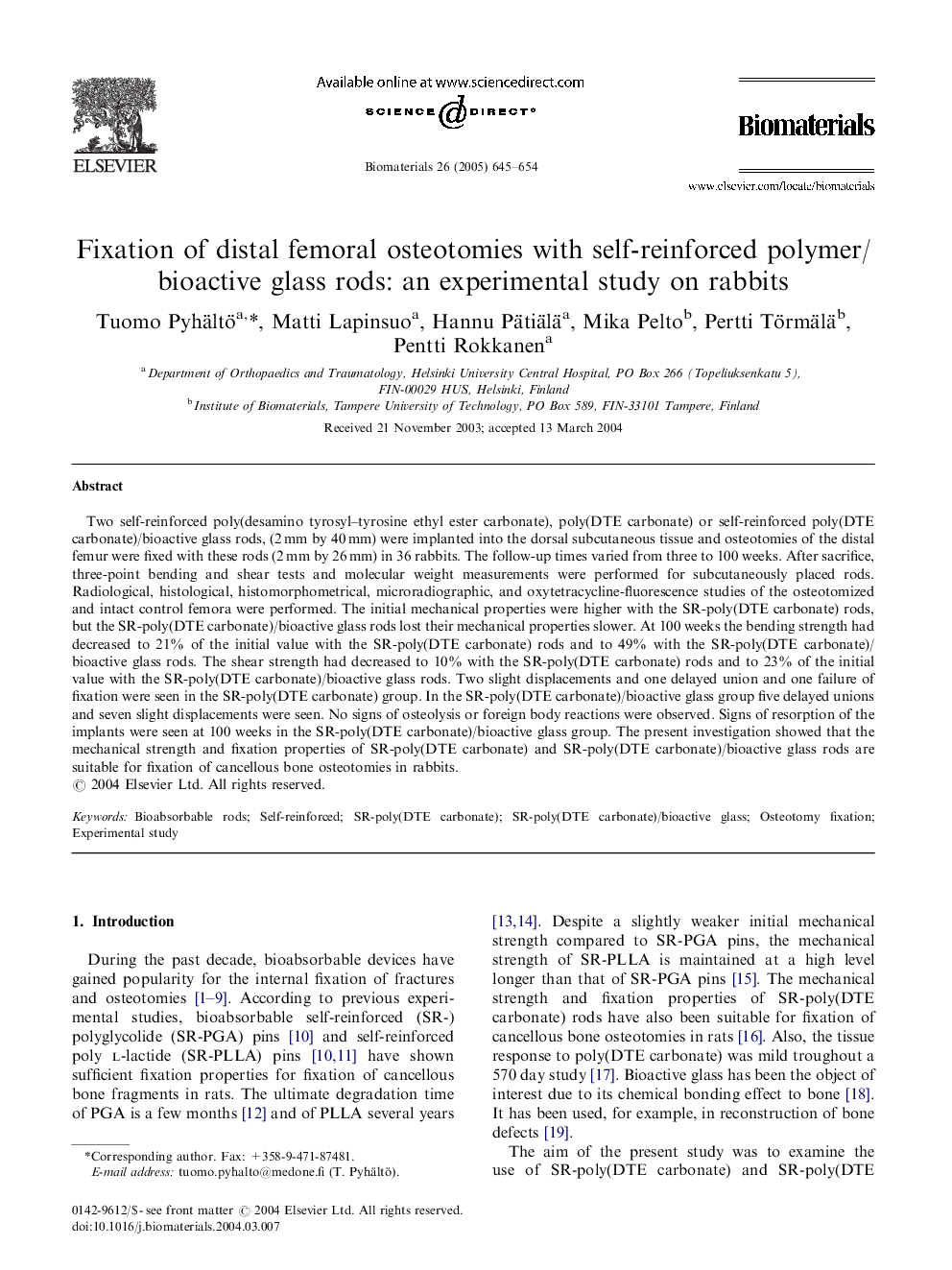| Article ID | Journal | Published Year | Pages | File Type |
|---|---|---|---|---|
| 10230330 | Biomaterials | 2005 | 10 Pages |
Abstract
Two self-reinforced poly(desamino tyrosyl-tyrosine ethyl ester carbonate), poly(DTE carbonate) or self-reinforced poly(DTE carbonate)/bioactive glass rods, (2Â mm by 40Â mm) were implanted into the dorsal subcutaneous tissue and osteotomies of the distal femur were fixed with these rods (2Â mm by 26Â mm) in 36 rabbits. The follow-up times varied from three to 100 weeks. After sacrifice, three-point bending and shear tests and molecular weight measurements were performed for subcutaneously placed rods. Radiological, histological, histomorphometrical, microradiographic, and oxytetracycline-fluorescence studies of the osteotomized and intact control femora were performed. The initial mechanical properties were higher with the SR-poly(DTE carbonate) rods, but the SR-poly(DTE carbonate)/bioactive glass rods lost their mechanical properties slower. At 100 weeks the bending strength had decreased to 21% of the initial value with the SR-poly(DTE carbonate) rods and to 49% with the SR-poly(DTE carbonate)/bioactive glass rods. The shear strength had decreased to 10% with the SR-poly(DTE carbonate) rods and to 23% of the initial value with the SR-poly(DTE carbonate)/bioactive glass rods. Two slight displacements and one delayed union and one failure of fixation were seen in the SR-poly(DTE carbonate) group. In the SR-poly(DTE carbonate)/bioactive glass group five delayed unions and seven slight displacements were seen. No signs of osteolysis or foreign body reactions were observed. Signs of resorption of the implants were seen at 100 weeks in the SR-poly(DTE carbonate)/bioactive glass group. The present investigation showed that the mechanical strength and fixation properties of SR-poly(DTE carbonate) and SR-poly(DTE carbonate)/bioactive glass rods are suitable for fixation of cancellous bone osteotomies in rabbits.
Keywords
Related Topics
Physical Sciences and Engineering
Chemical Engineering
Bioengineering
Authors
Tuomo Pyhältö, Matti Lapinsuo, Hannu Pätiälä, Mika Pelto, Pertti Törmälä, Pentti Rokkanen,
